CHAPTER 8
SURVIVAL
HOT-WET SURVIVAL INFORMATION
- Be Alert
- Be Wary of Strangers
- Guide on Trails to Friendly Villages
- Follow or Float on Waterways to Sea Coast
- Food Grows in Fields Near Villages
- Conceal All Evidence of Your Being in an Area
- A Few Feet into Dense Jungle Will Hide You
- Insect Repellent Applied to Fiber Makes Good Tinder
- Boil or Treat All Water Used for Drinking or Washing
I. EVASION.
- First, get as far away as possible. Sometimes this may mean several miles; at other times, just a few yards. Plan your escape, do not run blindly. Use your head—there is no substitute for common sense. As soon as possible, sit down, think out your problem, recall what you learned in training.
- Pinpoint your location as accurately as possible, using your compass, sun, map, known landmarks, etc. If your compass is broken or lost, remember that when facing the sunrise, north is to your left. The following methods can be used for determining direction.

Figure 1. Southern Cross.
- Using the Southern Cross: In the Southern Hemisphere you can find south by locating the Southern Cross. Compare this group of stars to a kite. If you can figure the length of the kite from tip to tail and extend an imaginary line from the tip of the tail four and one-half times the length of the kite, you can determine the approximate direction of south.
- Using a watch to find north:
- General. The sun always appears to be south of the north temperate zone and north of the south temperate zone. A timepiece can be used to determine the direction of true north utilizing this fact, while compensating for the eastward to westward movement of the sun.
- North temperate zone.
- Hold timepiece so that hour hand points at sun.
- Mentally draw an angle with its vertex at the center of the timepiece, one line passing through the number 12 and the other line along the hour hand.
- Cut this angle in half and note its imaginary projections on the ground.
- This imaginary line, bisecting the angle mentally drawn, points south, its reverse direction is north.
- South temperate zone.
- a. Hold timepiece so the figure 12 points at the sun.
- b. Mentally draw an angle with its center at the center of the timepiece and its sides passing through the figure 12 and along the hour hand.
- c. Bisector now points north.
- e. The diagrams below, graphically illustrate the methods of finding north described above.
- f. Shadow tip method for finding direction: Drive a stake so that at least three feet of it is above the ground. Mark the tip of the shadow it casts. Wait for a while—10 minutes is long enough—and mark the spot where the tip of the shadow is then resting. A line drawn between the two marks will always point north.
- g. Study the map. Determine the slope of the land to guide on. Notice all large waterways. People usually live and travel on the waterways.
- h. Determine the direction in which you wish to go, move in one direction, but not necessarily in a straight line. Pick a linear objective, not a point objective, as it is easier to locate. Avoid obstacles—don’t fight them. Take advantage of natural cover and concealment. Blundering through jungle and wooded areas leads to bruises, scratches, and quick exhaustion.
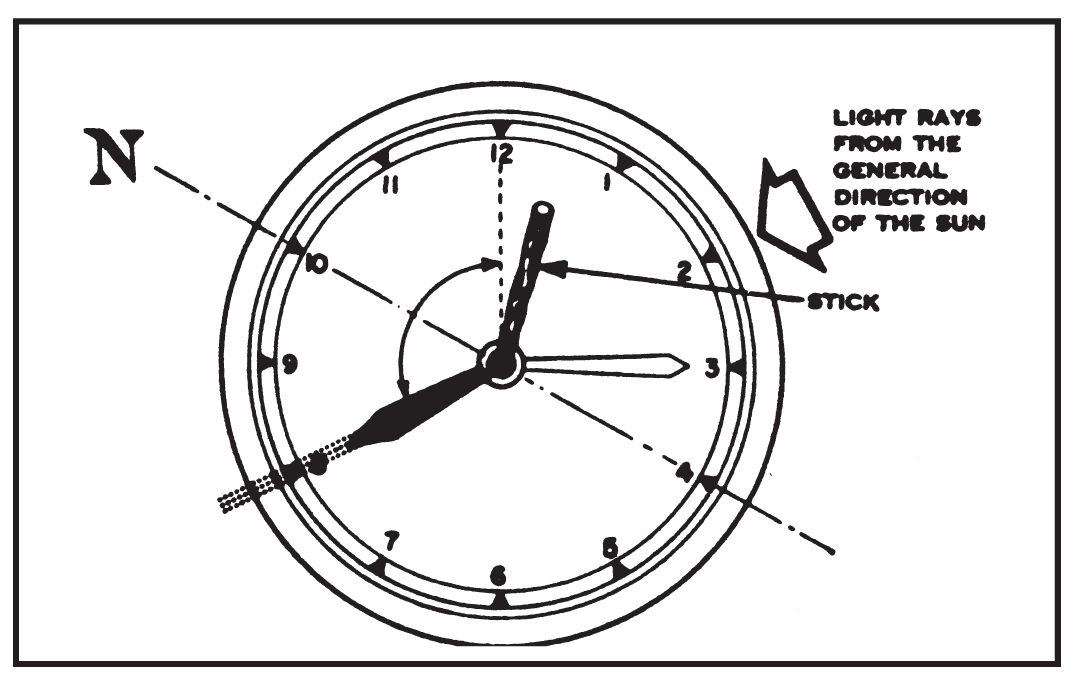
Figure 2. Finding north in the north temperate zone.
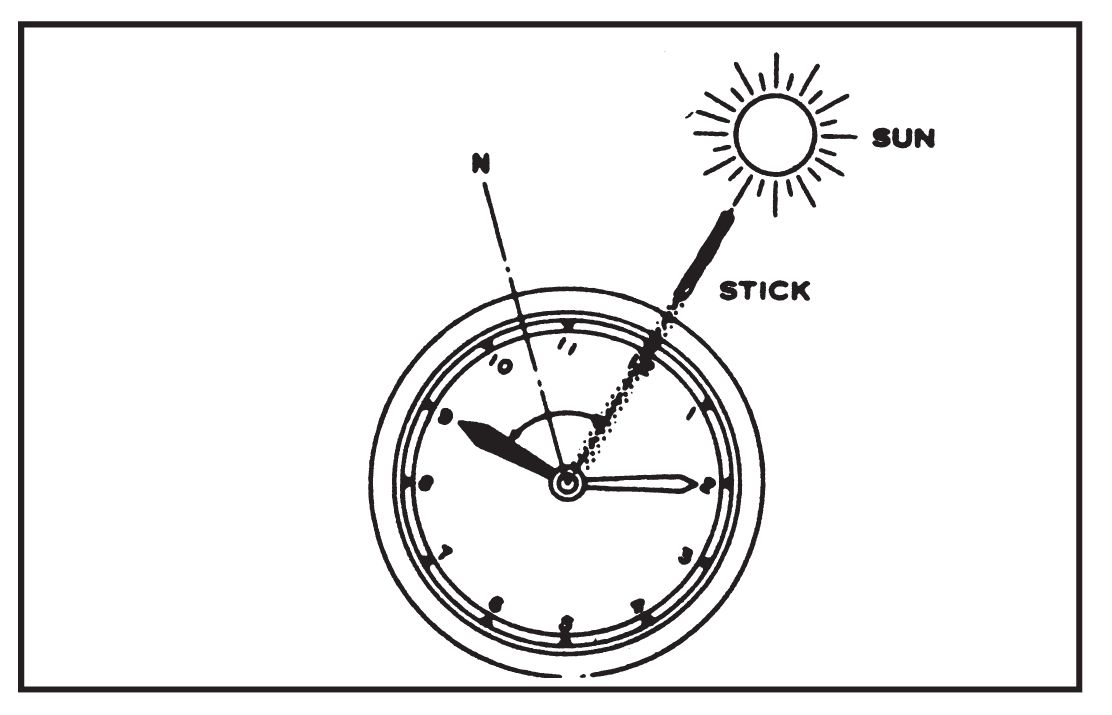
Figure 3. Finding north in the south temperate zone.
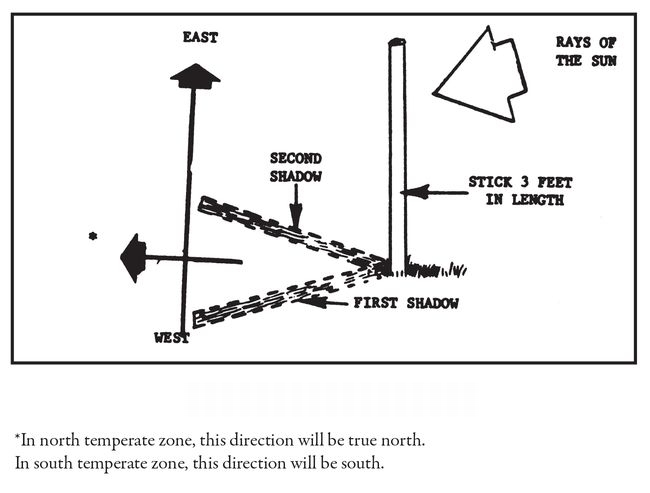
Figure 4. Shadow Tip Method.
- i. Check bearings often. Roads and trails can be used to guide on, but never travel on them. Stay alert. Natives remain on trails by preference. A few feet from the trail you are usually quite safe. Conceal yourself upon the approach of any other person until he passes or until you determine whether or not he is friendly.
- j. The easiest traveling is often on the crests of ridges. Remember, however, that crests are more exposed than hillsides, and because of ease of travel, they are apt to be traveled more frequently than other areas.
- k. Rivers or streams can make good roads but remember that the majority of native villages and encampments are on water. Rafts attract attention. Floating on or close to a log or drifting bush may be the simplest way to travel. Keep to the middle of the stream. If using a native boat, sink it during periods when not in use.
- l. When close to known enemy locations, move right after sunset or just before sunrise when there is sufficient light to enable you to avoid enemy installations, mine fields, sentries, etc., but dark enough to prevent recognition by the enemy. Arrange your clothing, weapons, etc., to present a profile as similar as possible to the natives of the area.
- m. Be quiet, noise carries far and natives are alert to any strange noise. Bury your refuse. If the enemy finds sign of your presence, it may lead to your capture.
- n. Do not sleep near your fire or your water supply. Get far enough away to be concealed.
- o. If lost in grass that is so tall that you cannot see over it, as a last resort cut down enough to give you some freedom of movement and, using your machete or any other tool, dig a hole to crawl into and set fire to the grass. Take every precaution not to get burned by fire or asphyxiated by smoke.
- p. The jungle provides many hiding places. You may have to use them. Bamboo thickets are excellent. Because of the nature of bamboo, you cannot be approached without being alerted by the noise of dry bamboo.
- q. When approaching camp, use extra precaution, for the camp is probably being watched.
- r. At all times when hiding or remaining in one location for a period of time, be sure to plan more than one exit.
II. SURVIVAL.
- Get to known friendly village as soon as possible. Avoid all others except as a last resort. It is difficult for a person unfamiliar with the jungle to live in it without native assistance.
- Before entering any strange village, whether it is friendly or not, conceal your weapons. If it is an enemy village, weapons will be taken from you. it is a friendly village, you can always go back and get them from where they are hidden.
- Many of the jungle diseases are insect borne. Use insect repellent freely, if available.
- Take time to repair your clothes. It helps to prevent insect bites and further tearing of clothes.
- Examine your surroundings carefully. Many of your needs are there. Thorns broken from bamboo or trees can be used for needles. Strips of vines can be made into thread. If you need rope, vines will do. Your food and shelter, in fact your life, may depend on your ability to make use of things that are all a round you.
- Be careful. Do not use trees and vines to pull yourself up hills as thorns, ants, scorpions, etc., will be encountered and make sores that may become infected. Use a walking stick to push aside vines and bushes.
- Poisonous reptiles and large mammals of the jungle will cause few problems. Given a chance, they will avoid you.
- If a survival kit is available most articles are self-explanatory. Some have multiple uses. The waterproof adhesive tape can be used for temporary repairs to clothing and mosquito nets as well as covering body wounds. Fish line can be used for snares. Three fish hooks, their shafts tied together with their hooks pointing out, can be used on the fish line to snare fish, crabs, etc. Head nets can be used as fish nets and snares. A fish hook fastened to a length of line, baited with fish or meat and left on the sea shore or in a field may be used to catch birds.
III. WHEN REQUESTING NATIVE ASSISTANCE:
- Show yourself and let the natives approach you.
- Deal with recognized headman.
- Do not approach groups.
- Do not display weapons.
- Do not risk being discovered by children.
- Treat natives well. There is much you can learn from them.
- Respect local customs and manners.
- Learn all you can about woodcraft.
- Take their advice on local hazards.
- Never approach a woman.
IV. SHELTER.
- Pick a high spot when making camp. Avoid dry river beds, dead trees, and ant nests. Avoid bat caves, droppings may cause rabies.
- Do not sleep on the ground if you can avoid it. Use your hammock if you have one, or make one of poncho or the multi-purpose net. If this is not possible, build a platform of bamboo, small branches, etc. It will assist in avoiding insects, reptiles, etc.
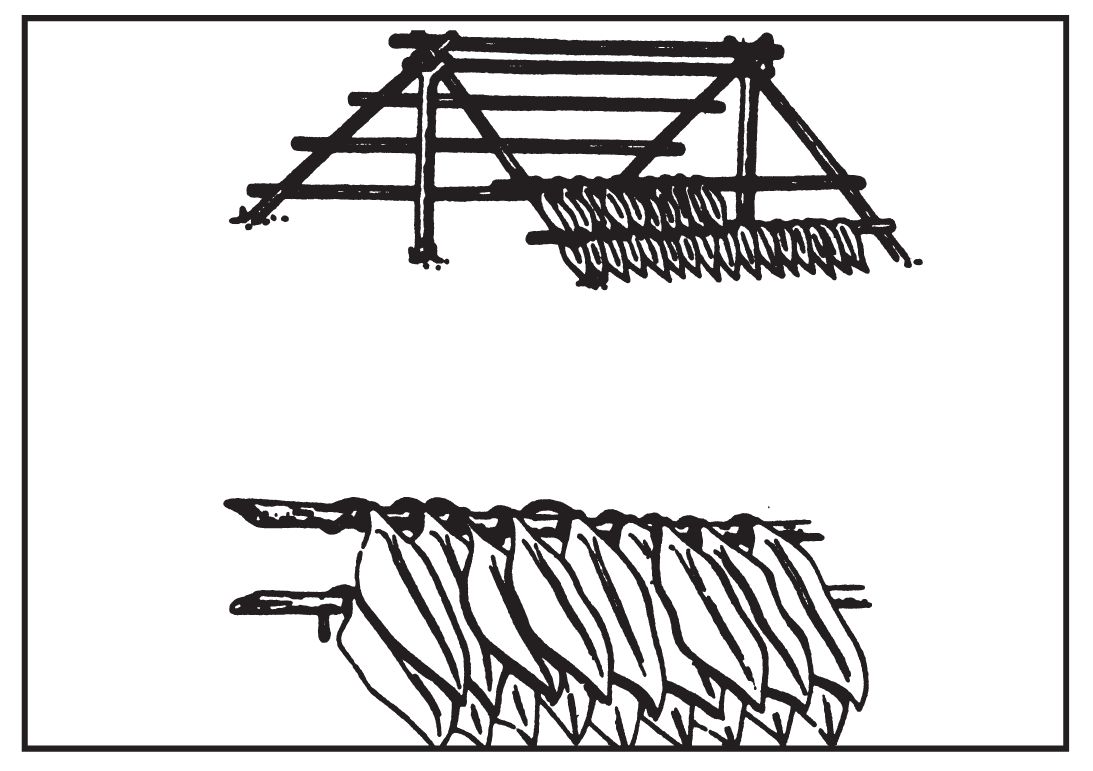
Figure 5. A-type framework.
- Types of jungle shelters:
- Simple parachute shelter made by draping a parachute over a rope vine stretched between two trees.
- Thatch shelter (see figure 5) made by covering an A-type framework with a good thickness of palm or other wood leaves, pieces of bark, or mats of grass. Slant the thatch shingle fashion from the bottom upward. This type of shelter is considered ideal since it can be made completely waterproof. After finish your shelter, dig a small drainage ditch just outside its lanes and leading downhill; It will keep the floor dry.
- Beds. Don’t sleep on the ground; make yourself a bed of bamboo or small branches covered with palm leaves (see figure 6). A parachute hammock may serve the purpose. You can make a crude cover from tree branches or ferns; even the bark from a dead tree is better than nothing.
V. WATER.
- Water is more Important than food. If you have no water, do not eat. Check all drinking water for leeches and other small aquatic animals.

Figure 6. Bamboo bed.
- Indian wells. In dry areas, water can usually be found by digging a hole two or three feet deep in the bottom of dried up streams and river beds. When water has been obtained, camouflage hole.
- Boiled or untreated water.
- Many vines have water in them. The vine should be cut through. When a nick is cut in the vine about three feet above the original cut, a potable liquid will drip out. Do not apply vine to lips. Avoid any vine, plant, or tree with milky juice as many are poisonous. Water can be found at the base of the leaves of palms; or in sections of dead bamboo (see figure 7). A section of bamboo placed against a tree will collect water during rain. Moisture collects under leaves in the dry season. Rub these with a cloth or other absorbent material, squeeze it out into container.
- At the sea shore, drinkable but brackish water can be procured by digging a hole ten feet above the high tide line.
- If water is scarce, travel during coolest part of day or during night. Rest during heat of day. By doing this, the water content of the body is conserved.
VI. FOOD.
- There is food in the jungle if you know where to find it. Plan one good meal each day but nibble on any food that you may have or can find. Eat strange in small quantities and wait for a reaction. Avoid all mushrooms. There is little nutritional value in them and much danger.

Figure 7. Extracting water from vines.
- In villages, eat only food that is hot, if possible. If for fear of offending your host you have to eat native food that is not hot, take a yellow pill to avoid dysentery. All vegetable or fruit procured in a village or handled by natives should be peeled.
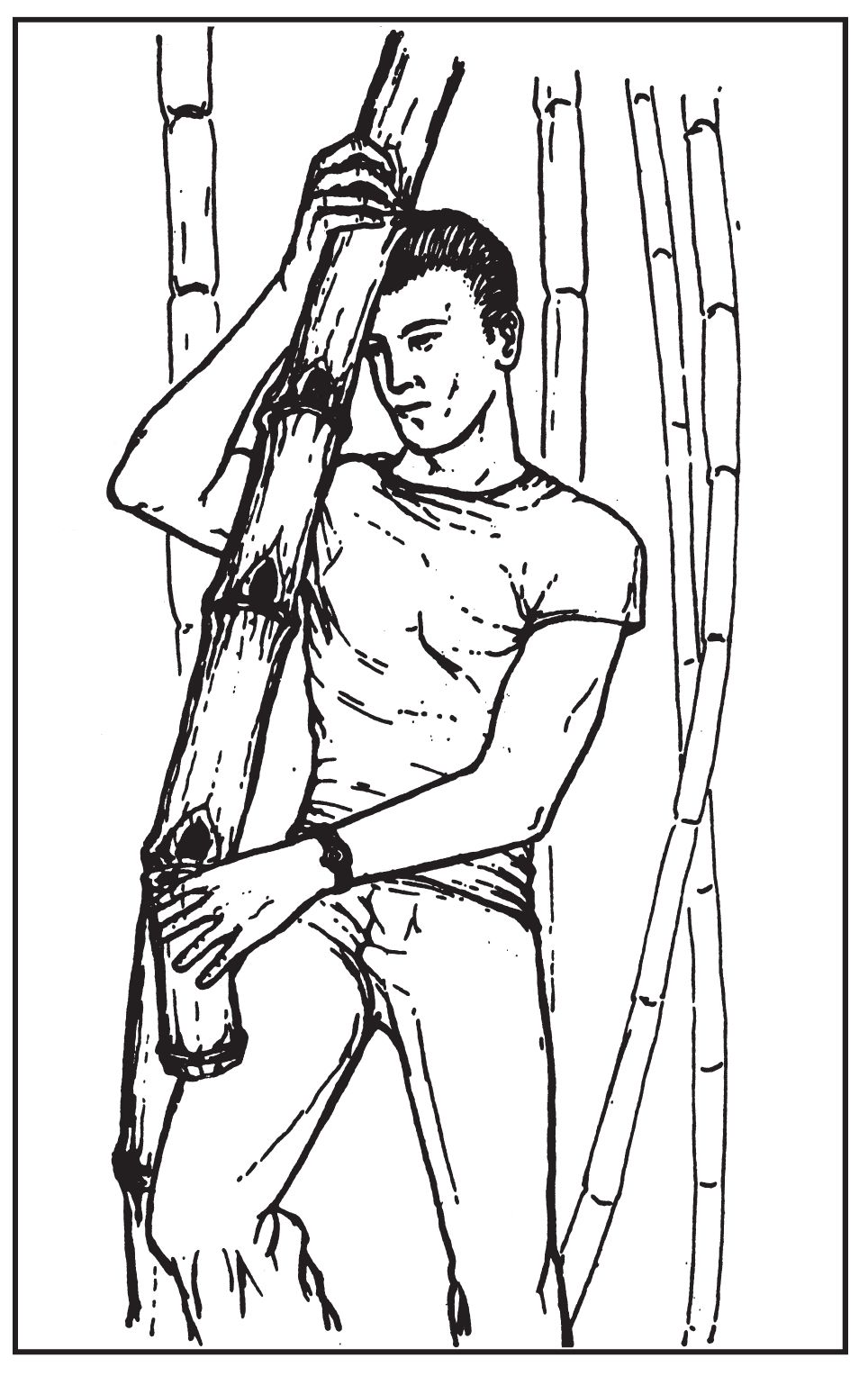
Figure 8. Bamboo joints contain water.
- Possession of a knife is vital for successful foraging. If you do not have one, a serviceable blade can be made from split bamboo. Split dry bamboo with a stone, break out a piece, sharpen on a stone, fire harden and resharpen. The result will be a crude but effective tool or weapon.
TABLE. NR.1 SURVIVAL TIME CHART.

- In villages, eat only food that is hot, if possible. If for fear of offending your host you have to eat native food that is not hot, take a yellow pill to avoid dysentery. All vegetable or fruit procured in a village or handled by natives should be peeled.
- Animal food. Grasshoppers, ant eggs, hairless caterpillars, larvae and termites, are good when cooked. Remove heads, skin, and intestines of snakes, rats, mice, frogs, lizards, before cooking. Bats can be caught in caves by flailing the air through which they are flying with a multi-branched stick. Inasmuch as bats are carriers of hydrophobia, do not get bitten.
- Traps and snares. Indiscriminate placings of traps is a waste of time. Small game such as rabbits, mice, etc., travel on paths through the vegetation. Set traps in or over these trails. A serpentine fence will guide certain birds, like pheasants and some larger animals, to your traps. Cut or collect brush for the fence and build it two feet high or more. Place traps in depth of curve.
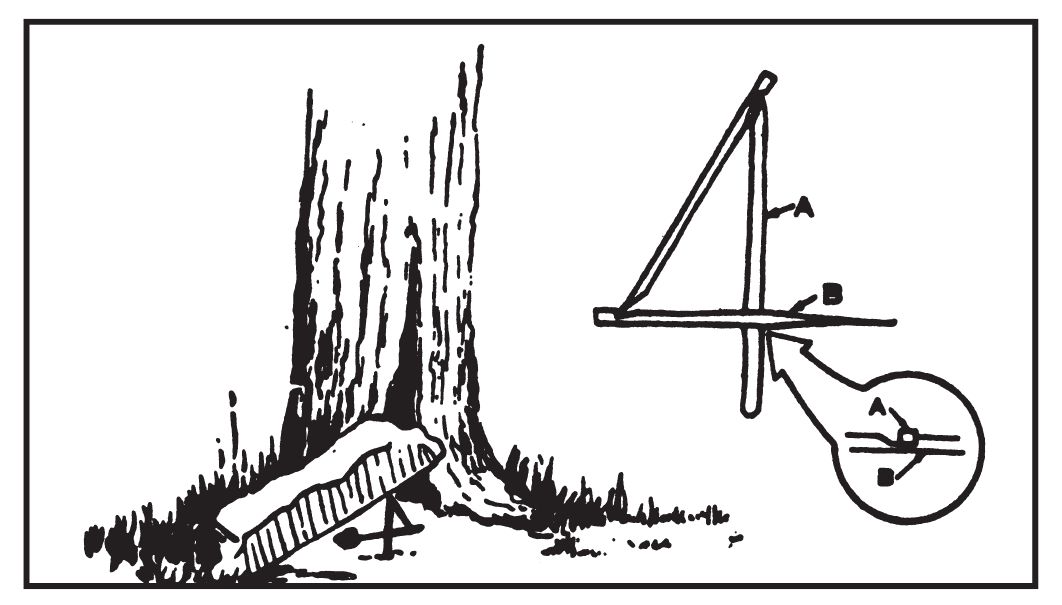
Figure 9. A simple deadfall using a figure 4 trigger.
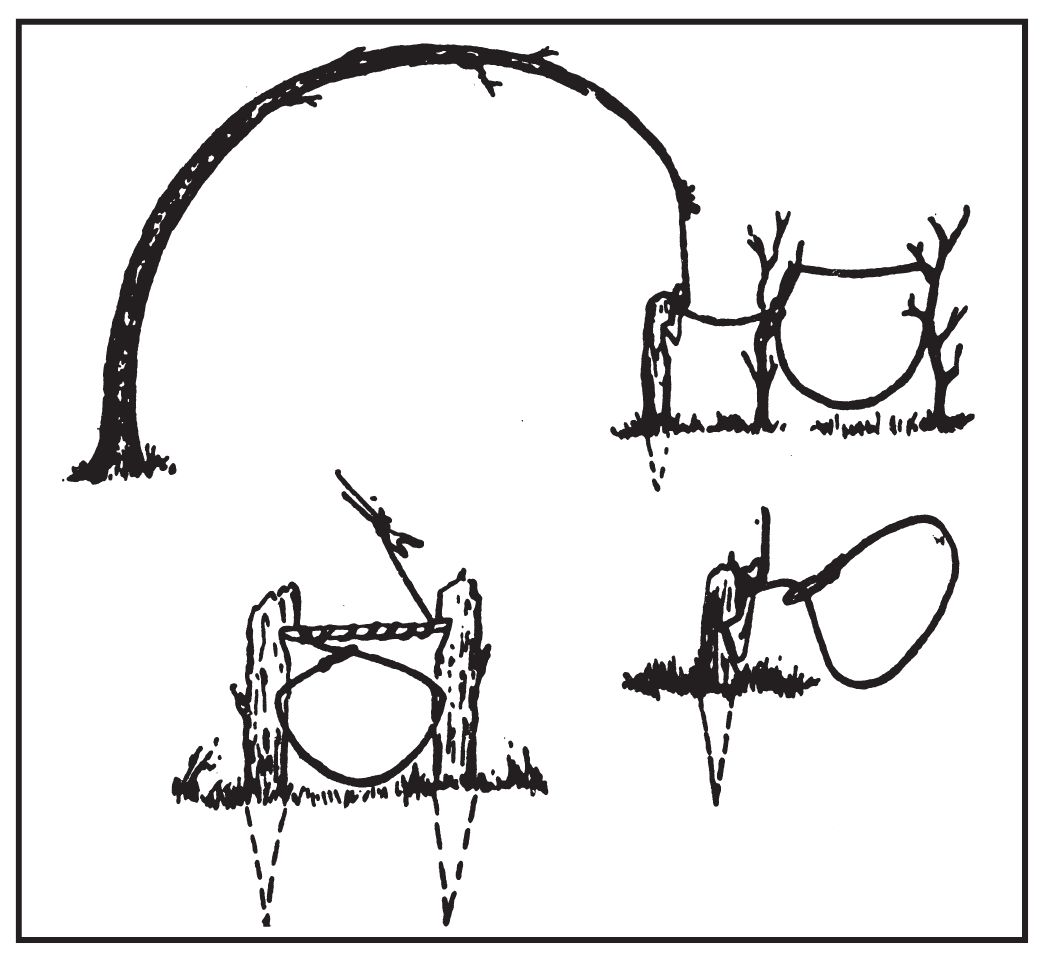
Figure 10. Fixed snares.
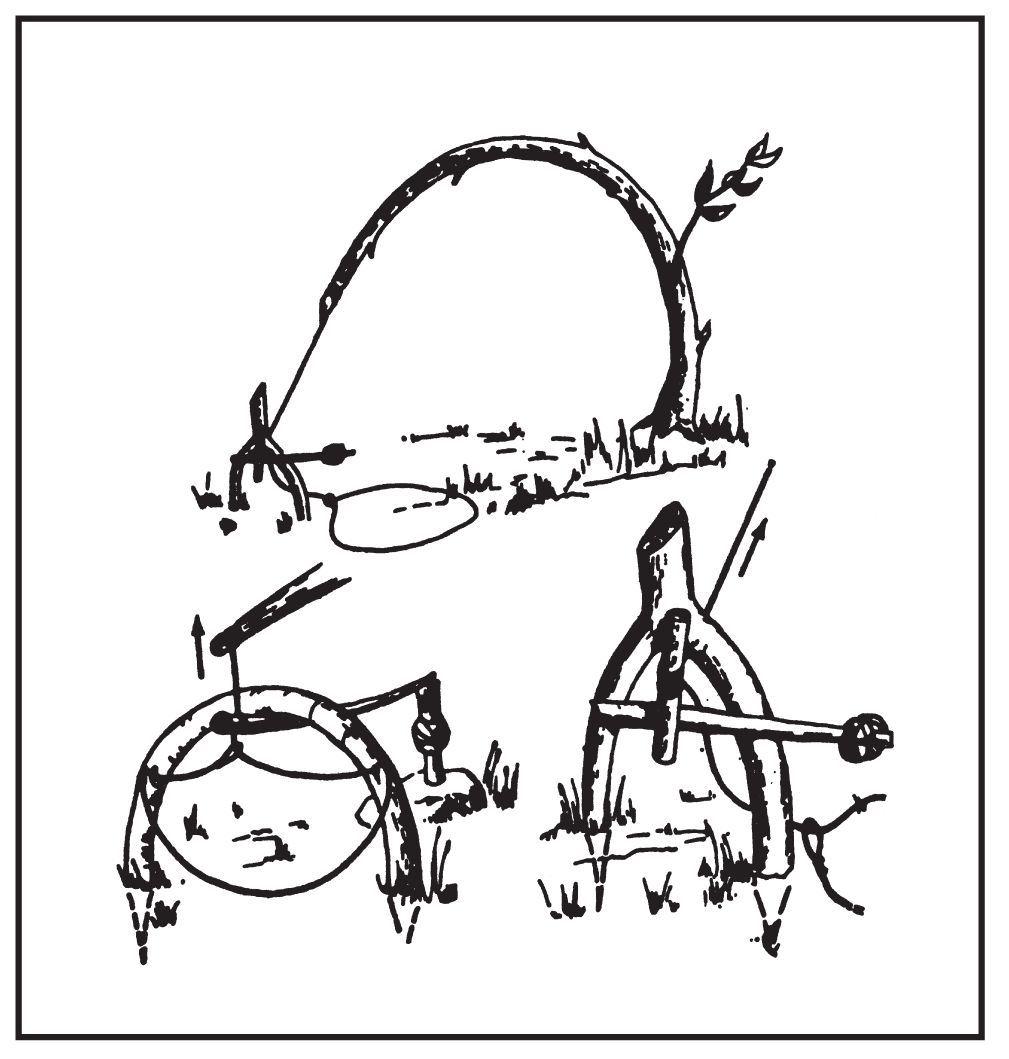
Figure 11. Hanging snares.
- Fish. There is no rule to determine edible fish. Avoid all strange or oddly shaped fish. Only those mussels, clams, oysters, etc., that are found underwater at low tide are safe. Salt water fish and shell fish can be eaten safely raw. Do not eat the eggs or intestines of any fish. Salt water snails come in all sizes and shapes. All are good to eat. Avoid cone snails and terebra. Some have poisonous stings that can be fatal. Never eat fresh water fish without cooking or when the flesh is soft or the eye sunken for they are undoubtedly diseased.
- Fish are attracted to light. If the area is safe, use torches at night to attract the fish. A head net made in a circular form by threading with bamboo or strung on a crotched stick will make a dip net. Fish in ponds or at the edge of the beach can be driven into the shallows by flailing the water with hands or brush. Clean fish immediately when caught. If you are in a group, work together to drive the fish and to net them. Help each other.
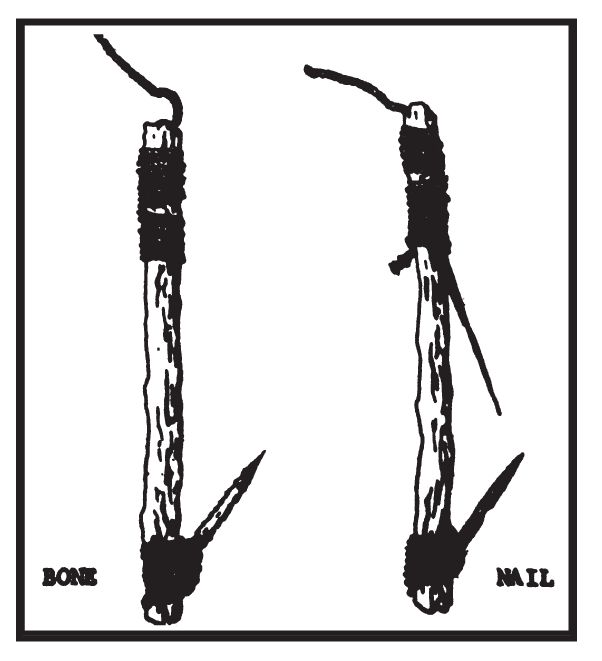
Figure 12. Improvised hooks and lines.
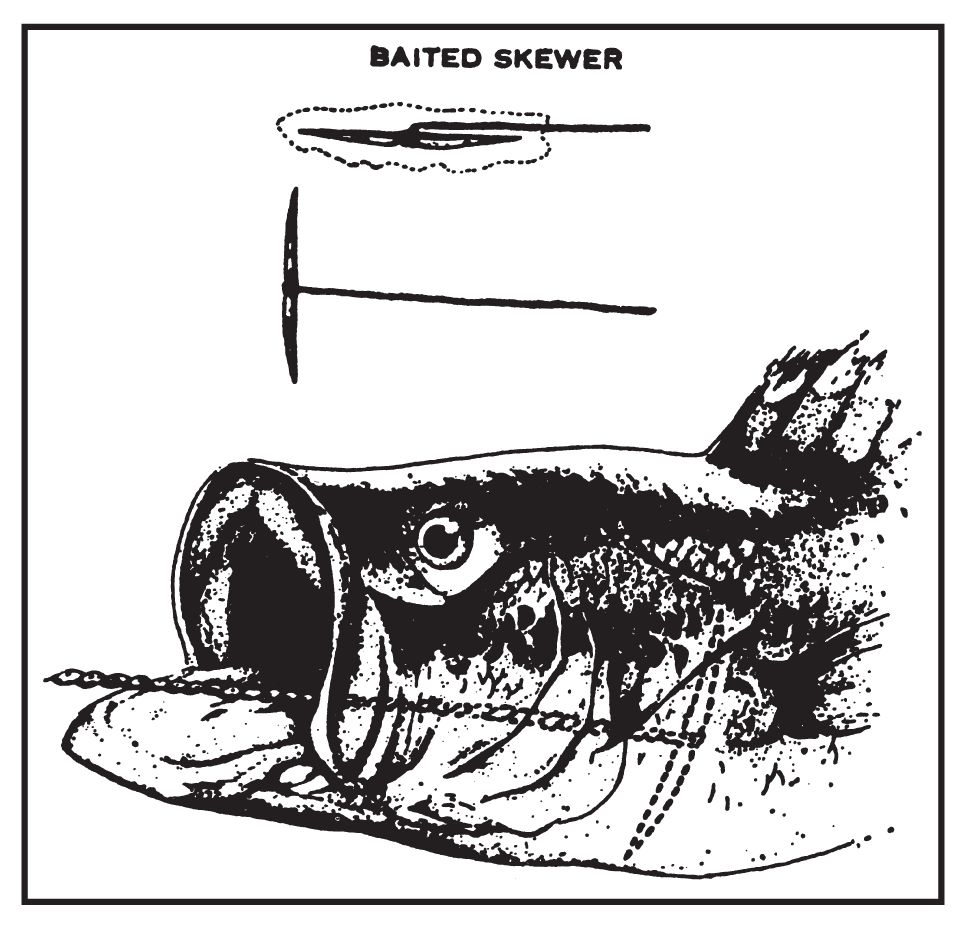
Figure 13. Skewer hook.
- Do not try to preserve meat or fish for any length of time. In the tropics flesh of any kind spoils rapidly unless dried or smoked.
- Skinning and cleaning. As soon as you catch a fish cut out the gills and large blood vessels that are next to the backbone. Scale it. Gut the fish by cutting open its stomach and scraping it clean. Cut off the head unless you want to cook the fish on a spit. Fish like catfish and sturgeon have no scales. Skin them. Small fish under four inches require no gutting, but should be scaled or skinned.
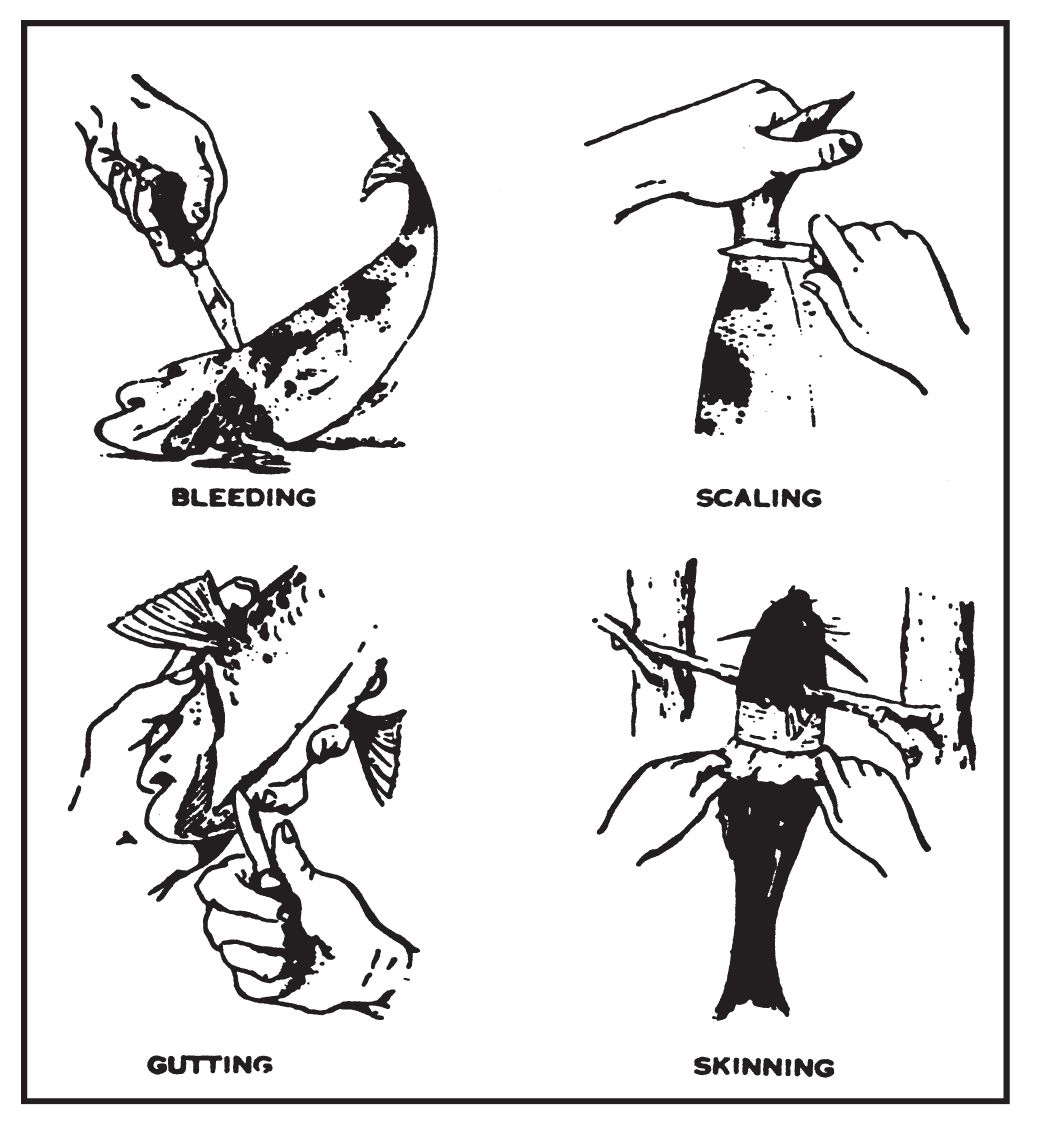
Figure 14.
- Fish are attracted to light. If the area is safe, use torches at night to attract the fish. A head net made in a circular form by threading with bamboo or strung on a crotched stick will make a dip net. Fish in ponds or at the edge of the beach can be driven into the shallows by flailing the water with hands or brush. Clean fish immediately when caught. If you are in a group, work together to drive the fish and to net them. Help each other.
VII. FIRE.
- Keep your fire small. In the rainy season or in damp jungles, dry fuel may be difficult to obtain. Carry dry tinder with you to assist in starting your fire. By cutting away the wet outer cover of a sound log, dry fuel can be obtained. Shave dry wood or dead bamboo into thin slivers and stack in tent formation over tinder. Pile heavier fuel around fire and add slowly until fire is well started. If fuel is damp, stack it close to fire to dry out.
- If the jungle floor is flooded or may become so, build your fire on a hearth of stones or wet wood. If necessary, build a shelter over the fire to protect it from the rain. If the weather gets cold and you need fire for survival, build a screen on the opposite side of the fire from you to reflect the heat toward you. A screen of leaves or branches three or four feet square tied together with fish line or vines will do the job. Tilt the screen with the top toward you. Fiber soaked in insect repellent makes good tinder.
VIII. COOKING.
- If larger game has been killed, the stomach or skin can be made into a cooking vessel after being cleaned. Fasten three strings into holes made in the top of the wall of the open stomach or skin pouch and tie to the apex of a tripod made of sticks. Fill with water, which can be brought to a boil by putting in fire-heated stones. If sticks are not available and if the ground is not too wet or stony, the skin or stomach pouch can be used as a liner for a bole in the ground. Then fill with water and place fire-heated stones into it.
- Meat and fish can be stuck onto a sharpened green stick and roasted over a fire.
- Small animals and birds can be roasted easily. Draw and skin them and wrap in leaves, clay, or mud. Bury in a pit, the bottom of which is lined with heated stones. Fill pit with dirt. In the morning when the pit is opened, you will find the meat well cooked and hot. Larger game can be prepared the same way by cutting into small pieces.
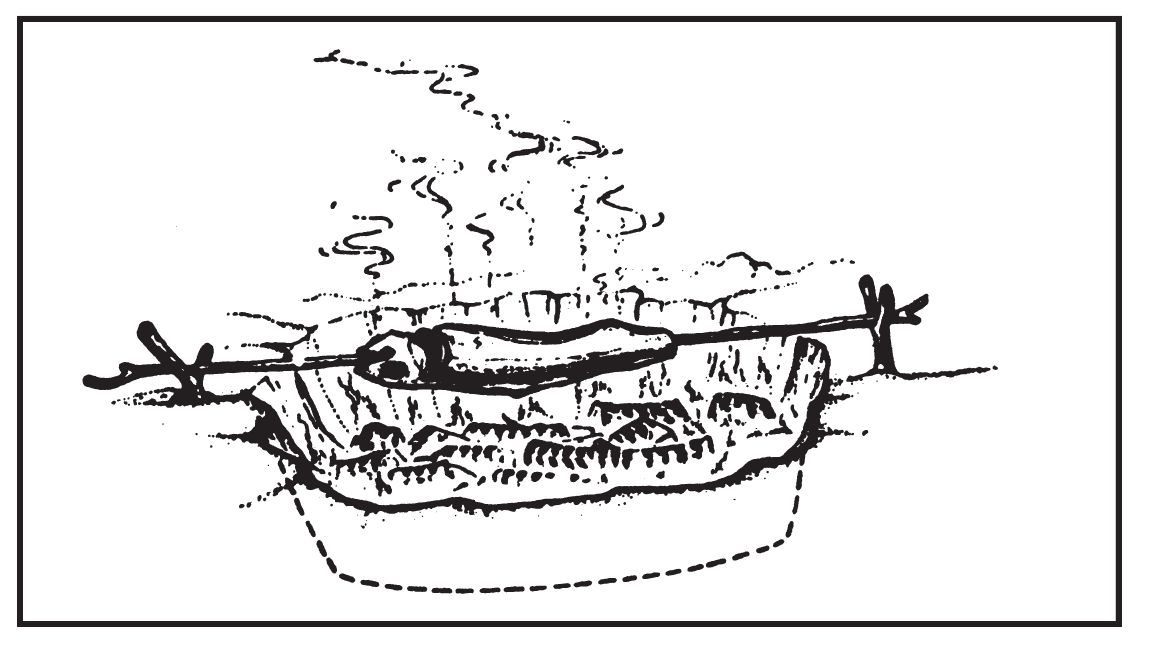
Figure 15. Pit fire.
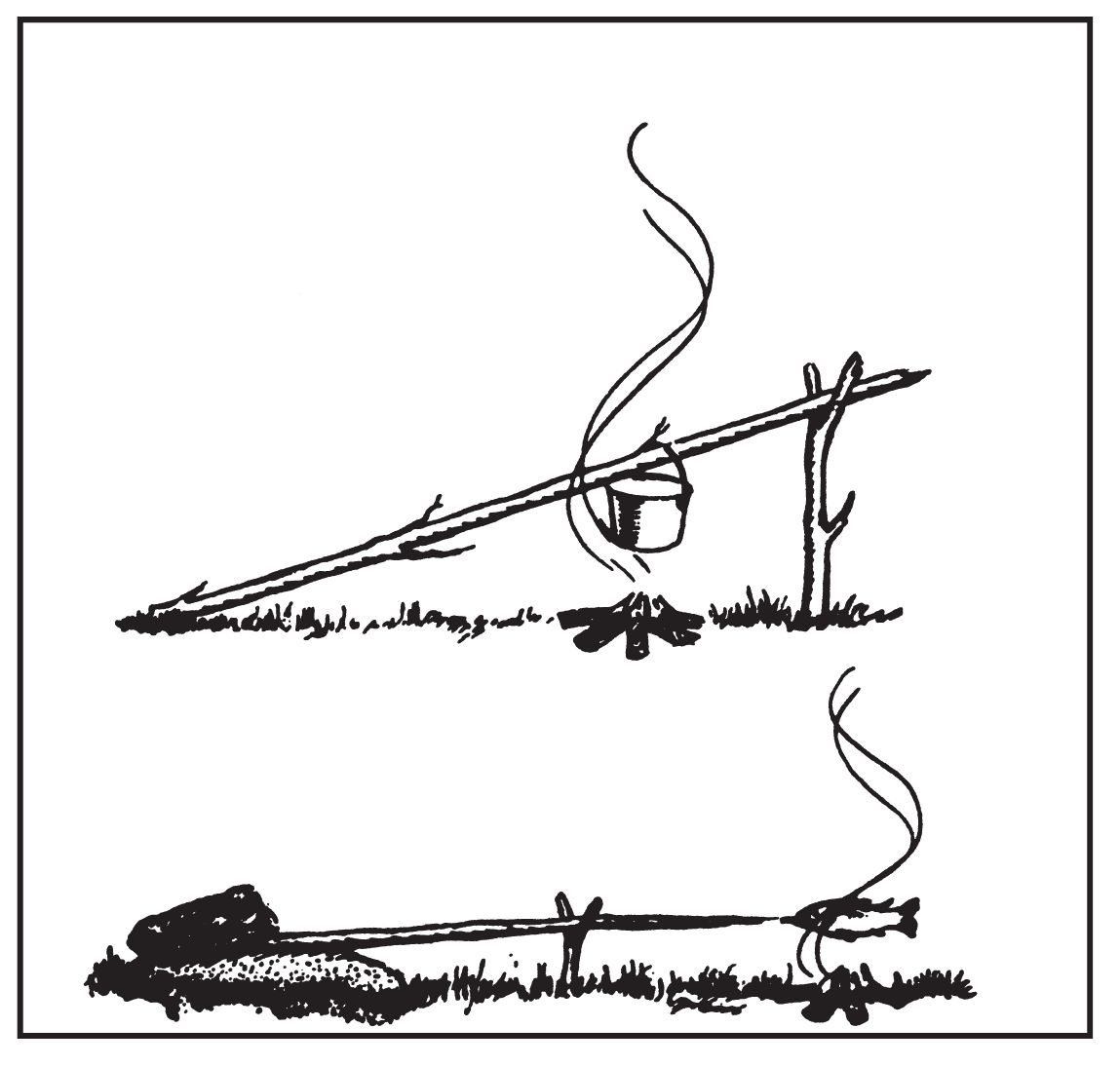
Figure 16. Simple crane.
IX. HEALTH.
- Care of your person is extremely important. If you have a survival kit, directions for the use of drugs are printed on the containers.
- Treat every wound or sore as soon as possible. To stop bleeding in the absence of bandages, apply freshly made spider webs. This will assist in the coagulation of the blood.
- In the absence of toilet paper, use leaves and grasses. Be careful to examine the leaves and grasses for insects. Use no leaves that have any fussy or hairy surfaces or are taken from a tree or plant with milky sap, or grass that has a serrated edge. Do not use material that is laying on the ground.
- Leeches and ticks can be partially avoided by tying cuffs of your jacket at the wrist and the bottoms of trouser legs outside the boots and applying insect repellent to all openings. Check your clothes and body frequently. Remove leeches and ticks carefully. If pulled off quickly, they may leave their heads in the bite. Infection will result. Wet salt, fire, or lime juice will cause them to withdraw their heads and fall off. Don’t hurry the process.
- In case of heat stroke, heat exhaustion or heat cramps, lower the body temperature by drenching with water or covering the body with wet clothing. Dissolve two salt pills in the equivalent of a cup of water and drink. Rest until all symptoms have passed.
- In cases of diarrhea when no drugs are available, a tea made from boiled guava leaves or charcoal eaten with hot water will be beneficial.
- Boils can be brought to a head by applying hot pads.
- Avoid sunburn. Even a short time in the jungle will reduce your resistance to the sun. Serious infection can result from over-exposure. Keep covered. Do not risk a painful, dangerous burn.
- MOST IMPORTANT OF ALL, KEEP YOUR HEAD, TRY NOT TO GET TOO TIRED, REST FREQUENTLY, BE CAREFUL, AND DO NOT GIVE UP.